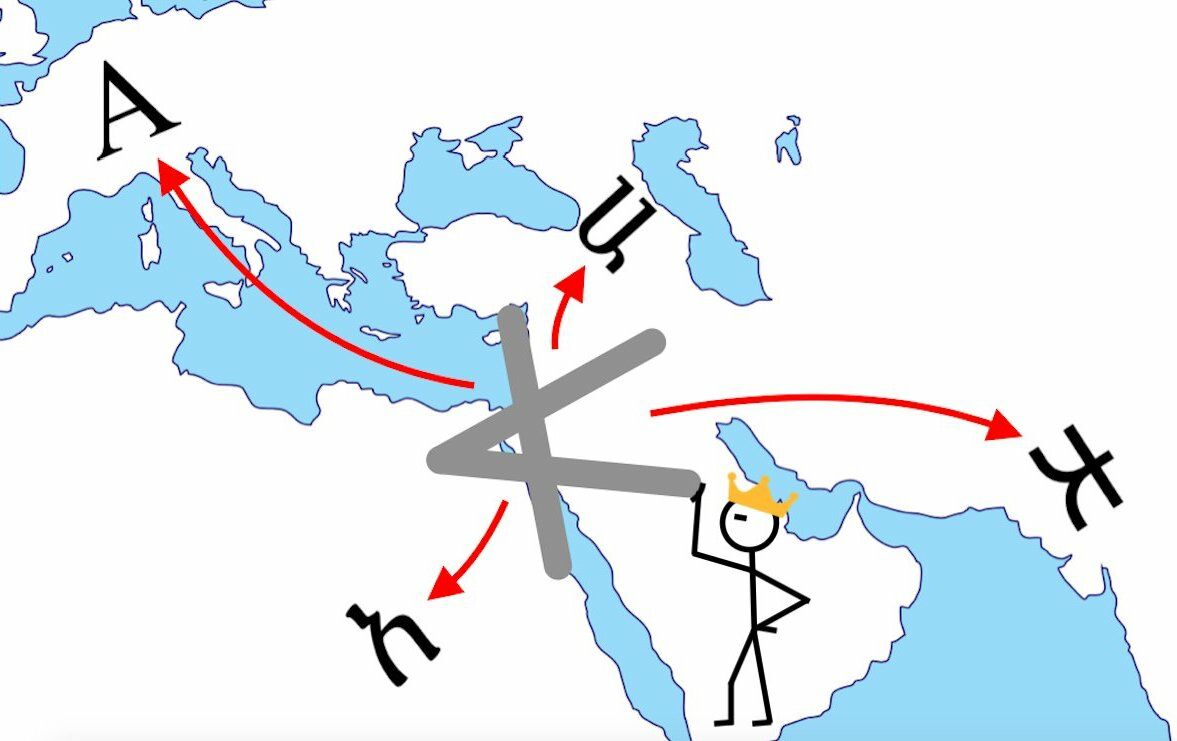Why is our English alphabet so similar to that of the ancient Israelites? Where did our English alphabet—or any of the worldwide alphabet systems, for that matter—originate? The conventional theory is that they stem from the alphabet of the ancient Phoenician traders, who in turn derived their 22-letter script from the world’s “first alphabet”—Proto-Siniatic. The Phoenicians shared this alphabet with the neighboring ancient populations—Israelites, Canaanites, Moabites, etc.
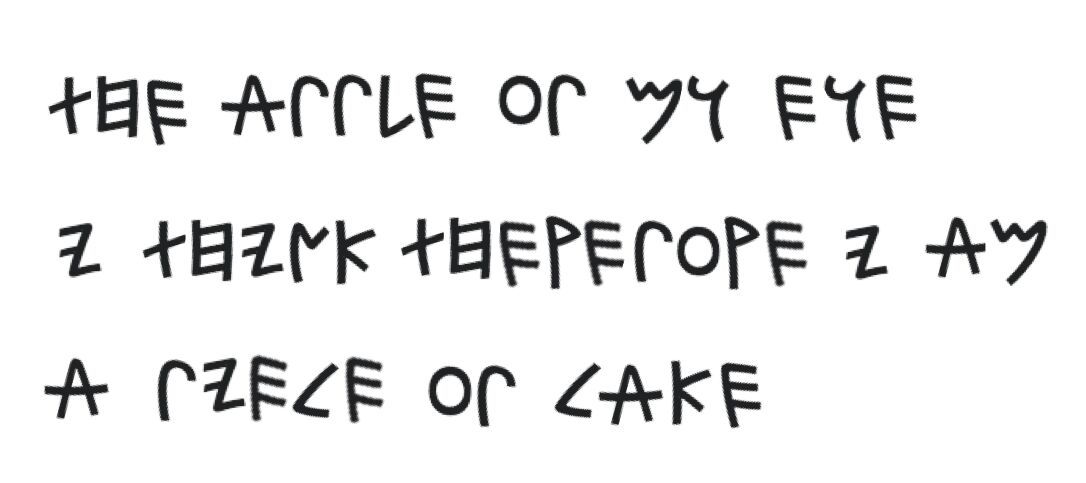
Is that really the case, though?
In this three-part series, we have examined the weight of evidence for an Israelite transmission of the alphabet to the Greek world (and from there on to the Latin world, up to our modern English alphabet today). We have examined how the circa 11th to eighth century b.c.e. transmission fits well with an Israelite transmission of the alphabet—as demonstrated by Scripture, archaeology, and other historical sources. If you haven’t already, please take a look at parts one and two for context.
In this article, we’ll look at what may have been the prime catalyst for an Israelite spread of the alphabet, not only to Greece, but to the surrounding Near Eastern countries during the 10th century b.c.e.—and ultimately culminating in the worldwide use of alphabet systems today.
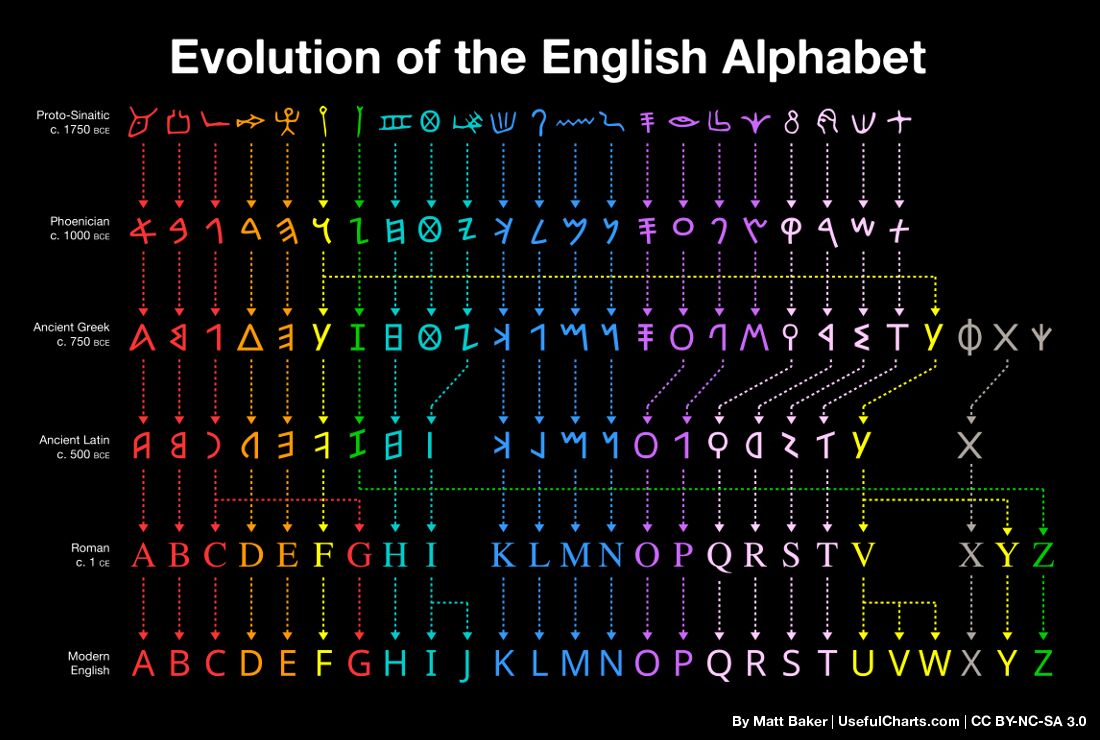
Effect of Empire
English is the language of international communication. It’s the global language of business. It’s essentially the language of the Internet. If you want to travel anywhere, you’ll be best off knowing English. Why does “everyone” speak English?
In short, it is thanks to the power, influence, dominance and education of the British Empire.
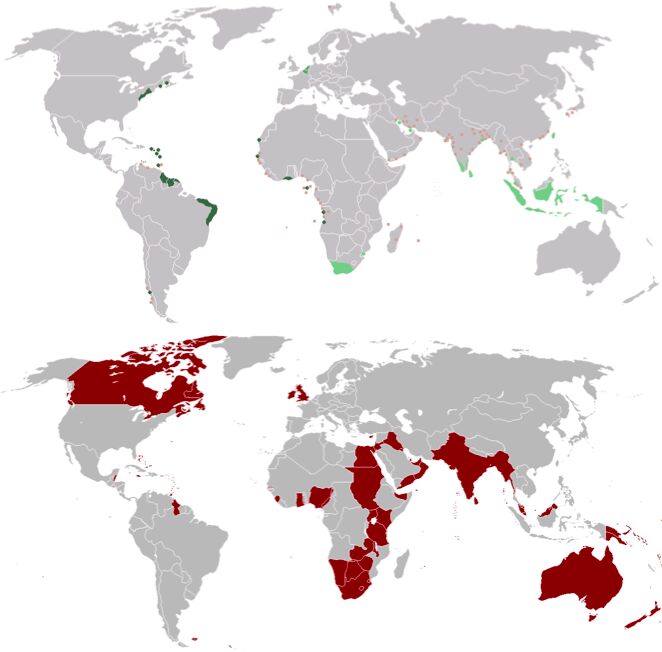
Around the same time the British Empire was growing, the Dutch were a powerful trading nation, with a network of seaports and coastal domains all around the world (up until 2004, Rotterdam was still the busiest port in the world.) Perhaps you can think of the Dutch as the Phoenician traders with their port cities. But we don’t all speak Dutch. Chances are, if you’re an English speaker and you’re reading this—which you obviously are—you know more German, French, Spanish or even Mandarin than Dutch! (Even the largest territories held by the Dutch—most notably Indonesia—do not list Dutch as an official national language.) It takes empire, power, prosperity and influence over vast territory to effect sweeping change.
Such was the British Empire, which at its peak controlled a land area equivalent to the moon. Such was the Roman Empire, from whom we adopted our alphabet. Such was the Greek Empire, from whom the Romans adopted theirs.
So, within the 11th to eighth centuries b.c.e.—the time frame in which scholars believe the Hebrew-Phoenician alphabet was adopted by the Greeks—was there any other powerful “empire” on the scene that could have acted as a catalyst for the Greek adoption of their writing system?
There was: an Israelite “empire.”
The Language of Solomon
King Solomon reigned for 40 years during the critical 10th century b.c.e.—the heart of the “alphabet transfer” period and when the Hebrew-Phoenician alphabet became much more standardized. You’ve probably heard the biblical account of Solomon’s extraordinary wealth and riches.
Long has the debate raged as to whether or not Solomon existed, let alone the size, scope, wealth and power of Israel at the time. (Nonetheless, if scholars can put an admittedly “lost civilization” of Phoenicia on a pedestal based on minimal archaeological evidence and heavy reliance on later textual evidence, then the same can be done for Solomon’s kingdom. Actually, a slew of new discoveries are emerging that attest to the biblical depiction of Solomon’s reign—but that’s another story.)
Solomon’s kingdom, according to the biblical account, was renowned far and wide. Solomon’s temple, covered in gold, was a wonder of the ancient world—in today’s money, the value of the gold has been estimated at roughly $300 billion (₪1 trillion—Israel’s current gross domestic product is about ₪1.3 trillion). Leaders and representatives traveled from far and wide to pay their respects to the king, to see his kingdom, and to test his unmatched wisdom.
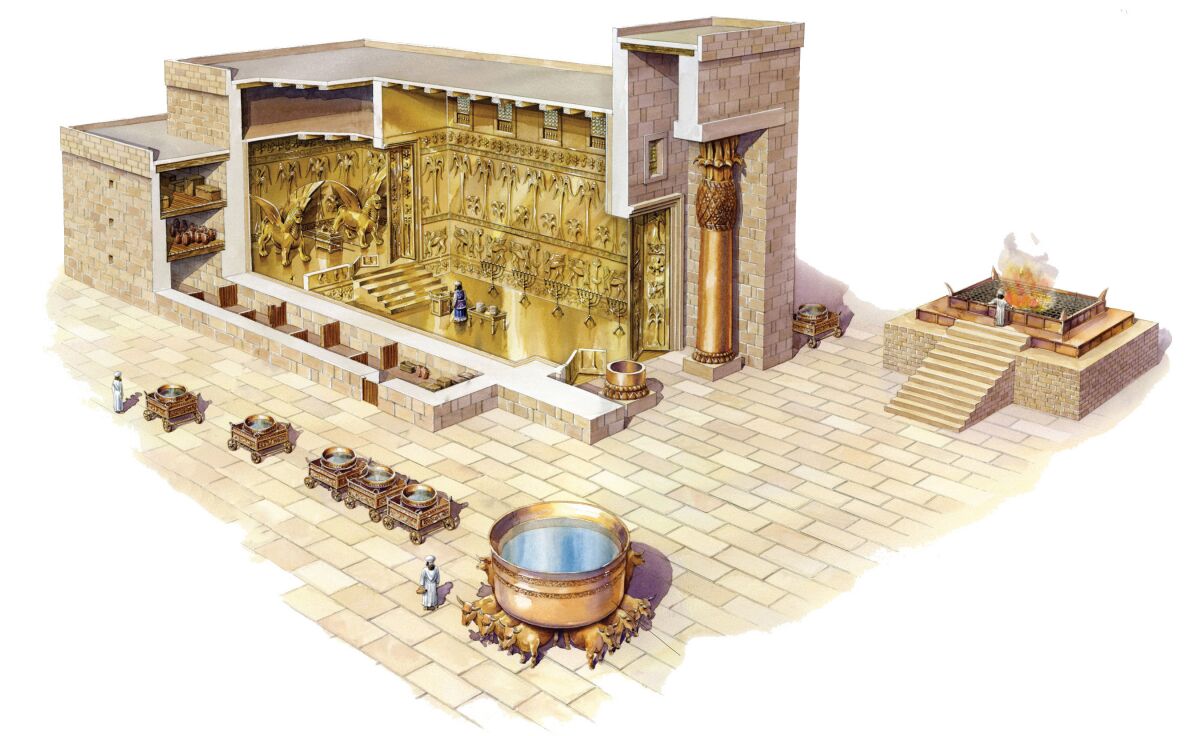
According to the biblical account, 10th-century b.c.e. Israel became literally awash in gold and other riches. Solomon became heir to his father’s newly conquered and massively expanded territory in the Levant, including land in Lebanon and Syria (e.g. 1 Kings 9:19), and likely much of the territory in the Sinai Peninsula. Not only did David and Solomon rule over the Israelite kingdom, they also directly reigned over other surrounding “kingdoms” (1 Kings 5:1). All Canaanites in and around the region—perhaps even as far away as Turkey (the seat of Hittite dominion)—were tributary (1 Kings 9:20-21).
Solomon also had a first-class merchant navy that sailed around the known world, bringing him gold, silver, ivory, apes and peacocks. His fleets were divided between the Red Sea in the south and the Mediterranean Sea to the west (verses 26-28; 1 Kings 10:22-23). Solomon became a major arms dealer and a merchant man, importing goods from Egypt, and selling chariots and horses to kingdoms as far north as Turkey (verses 28-29).

Famously, Solomon married 700 wives from far and wide, which in those days meant political connections—connections to Egypt, Moab, Ammon, Edom, Zidon, Turkey, etc (1 Kings 11:1-3). The Bible states that everyone—from the Ethiopians to the Zidonians to the Arabians—“all the kings of the earth” brought gifts of all types to Solomon (2 Chronicles 9:14, 23-24)—including most famously the queen of Sheba, who undertook a grueling weeks-long journey to Israel by a “very great train” (probably by camel; 1 Kings 10:2). The Bible affirms that the “riches and honor” of Solomon were unmatched by any king during his lifetime (1 Kings 3:12-13). Silver was so common that it became worthless (2 Chronicles 9:20, 27).
[A]nd his fame was in all the nations round about. … So king Solomon exceeded all the kings of the earth in riches and in wisdom. And all the earth sought the presence of Solomon, to hear his wisdom, which God had put in his heart. (1 Kings 5:11, 10:23-24)
Some would conclude that the Bible is simply being overly dramatic. Surely Israel could not have had more riches, power—even influence on the world around them—than the mighty Assyrians, Hittites, Babylonians, Egyptians. But here, remarkably, the archaeological record provides matching geopolitical context for the biblical account!
A ‘Period of Chaos’
This fantastic Israelite “empire” lasted nearly a century from David through to the start of the reign of Solomon’s son Rehoboam (circa 1011–930 b.c.e.). And it fills precisely a notable void in the remarkably mysterious 10th-century b.c.e. period of geopolitics.
The Egyptian empire had fallen during the Bronze Age Collapse, never to rise to the same heights of power. Virtually all eastern Mediterranean kingdoms had likewise collapsed and were languishing during this period. The powerful Hittite empire (which controlled much of Turkey) had collapsed. The Middle Assyrian empire had ended—they were now in a 150-year gap before the start of their “Neo” empire (which started, interestingly, just after Solomon’s reign). Likewise, the Babylonian Empire was in their own 100-year window termed the “Period of Chaos” (likewise ending just after Solomon’s reign). And the Greeks were in what is known as the “Dark Ages”—a mysterious period from which they would suddenly emerge with a new alphabet matching the one used by Israel.
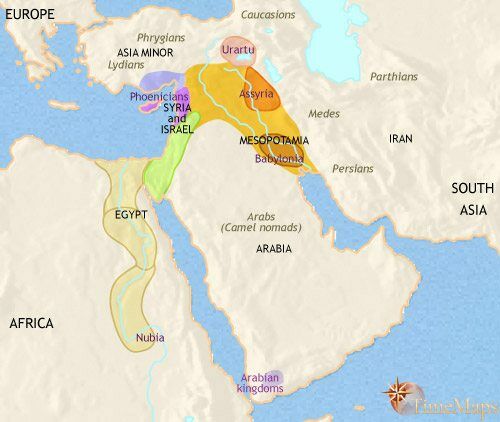
What power, then, filled the gaping void? History isn’t the story of century-long vacuums of power.
The Bible describes an Israelite empire at this time, even dominating these faraway “period of chaos” Mesopotamians. 1 Chronicles 18-19 enumerate David’s conquests and expansion of territory, including his defeat of the Philistines, Moabites, Arameans, Syrians, Edomites, Ammonites, Amalekites, Mesopotamians and a number of smaller entities.
Despite the popular academic bias, could the biblical account of a superb Israelite empire—which happens to slot perfectly into this precise timeframe and geopolitical situation—be the answer to this power vacuum? An empire with strong ties to the Greek world—a Greek world which finally emerged from its “Dark Ages” with similar stories and alphabet as its then-powerful, dominant, influential, even related Israelite “brothers”? Could the glory and dominance of Solomon’s empire be primarily responsible for the spread of the alphabet to Greece?
We can glean further evidence for this, not from Greece, but from everywhere else.
It’s (Not) All Greek to Me
The Hebrew-Phoenician alphabet did not spread around this time to just Greece—it went literally everywhere.
A prime example is the ancient South Arabian script, which archaeological discoveries show was on the scene by at least the ninth century b.c.e. This script was used in Ethiopia and the southern territories of the Arabian Peninsula, and is the forerunner of the modern Ethiopian Amharic script. But how was this South Arabian script received? These polities were far separate from the Phoenician state. In fact, scientists don’t say it was derived from the Phoenician script at all—instead, classifying it as derived from the centuries-older Proto-Siniatic script (of course, no mention of Hebrew influence).

The record is indeed silent about Phoenician connections with Ethiopia during this early period. But it is awash with Ethiopian connections to Israel. To this day, 3,000 years later, Ethiopians still hold dear to their Solomonic ties and the story of the establishment of their royal line from Solomon. The Bible takes pains to detail the queen of Sheba’s arduous journey to visit Solomon, the good relations between the two nations, and the close connections with other Arabian states, which brought Solomon tribute. Again, is it coincidence that they all ended up with an alphabet directly related to Israel’s, roughly around this period?
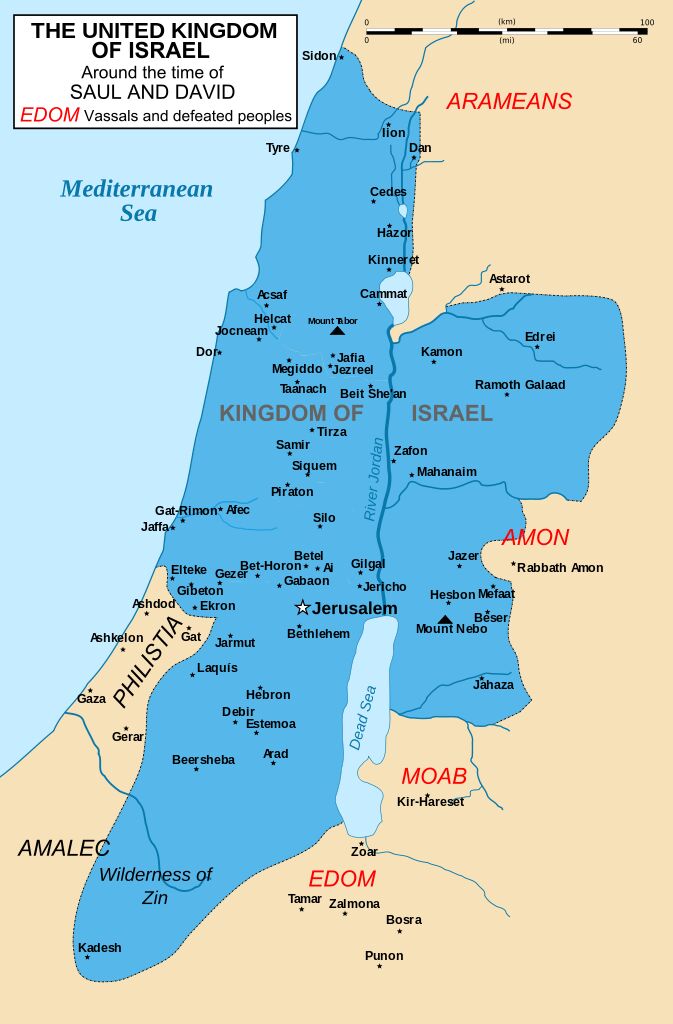
Putting aside Ethiopia and the southern Arab states, one does not need to look far from Solomon’s kingdom to see the literal flowering of the use of the alphabet by surrounding nations on all sides of Israel. Take a look at the map to the right, from the time of Saul and David (even at this size, Israelite territory wasn’t yet at its full Solomonic extent). Why is it that every nation surrounding Israel—the Arameans in the northeast, the Ammonites in the east, the Moabites in the southeast, the Edomites in the south, the Philistines in the southwest (as for the Amalekites, there are no yet known inscriptions), the Greek isles to the west, as well as the Phoenicians in the north—why did they all adopt and standardize the same Hebrew-Phoenician alphabet, beginning roughly around this time period? Sure, the Phoenicians were known sea-traders. But what about the distant, overland Moabites, Edomites, Ammonites, Arabians—and further afield Ethiopians and southern Arab states? What about, as we covered in part two, the Philistines who migrated from Greece and adopted the alphabet of their surrounding neighbors?
Note also the words in red. These were, as the map shows, “vassals and defeated peoples” by Israel (including, later, the Amalekites and Philistines). It should be unsurprising, then, that these would receive the alphabet at this time from the Israelites, rather than the far distant Phoenicians.
Did the Israelites and Phoenicians, then, coincidentally find themselves in the business of spreading the alphabet around at exactly the same time—the Phoenicians by sea, and the Israelites overland? Or was there a singular driving force—an Israelite “empire,” that led the way—and that led the Phoenicians to use the same alphabet? As the second-century b.c.e. historian Eupolemus wrote, it was the Phoenicians who received their alphabet from the Israelites, not the other way around.
And why might that have been?
An ‘Age of Enlightenment’
The Bible does not just describe David and especially Solomon’s empire as one of wealth and power. It describes it as one of literary renown!
King David is credited with “penning” most of the Book of Psalms, and King Solomon with three other books of the Bible (Proverbs, Ecclesiastes, Song of Songs). 1 Kings 5:12 attributes to Solomon a total of “three thousand proverbs,” besides songs. The same passage describes Solomon’s wisdom (including, undoubtedly, his writings) as excelling “the wisdom of all the children of the east, and all the wisdom of Egypt.
For he was wiser than all men … and his fame was in all the nations round about. … And there came of all peoples to hear the wisdom of Solomon, from all kings of the earth, who had heard of his wisdom. (1 Kings 5:10-11, :14)
That “counsel” and “knowledge” came in the form of writing, as well as speaking (e.g. Proverbs 20:22). And besides kings David and Solomon, 1 Chronicles 25:8 highlights the presence of “teachers” and “scholars” in Israel during this time.
The book of Ecclesiastes specifically emphasizes Solomon’s teaching—including the heavy emphasis on the written word. Passages reference Solomon’s search for just the right words, “and that which was written uprightly” (12:10). At the end of his life, a weary Solomon related the following:
[F]urthermore, my son, be admonished: of making many books there is no end; and much study is a weariness of the flesh.
With the above Scriptures, then, we have biblical affirmation of the renown of Hebrew literature and wisdom in the 10th century, and its spread far and wide around the known world. And at this same time in secular history and archaeology, we see the adoption of the same Hebrew alphabet by countries surrounding Israel and beyond—the very countries identified in the Bible as having close contact with Solomon’s kingdom. We also see the standardization of the Hebrew-Phoenician alphabet at this point in time—in Israel and in Phoenicia. Is it a stretch, then, to consider that these all were the result of the same phenomenon: the literary influence of a Solomonic empire?
One final, theological point. The glory, extent and influence of Solomon’s kingdom is highlighted in the Bible as a model of the World to Come. And a unique, linguistic phenomenon is attributed to this future world, as seen in Zephaniah 3:9 (King James Version):
For then will I turn to the people a pure language, that they may all call upon the name of the Lord, to serve him with one consent.
This world will witness the spread of a single, pure language. Is it any surprise that Solomon’s world—a type of the one to come—saw the spread of a single Hebrew alphabet, one that is now used in some form or another by 70 percent of the world’s population?
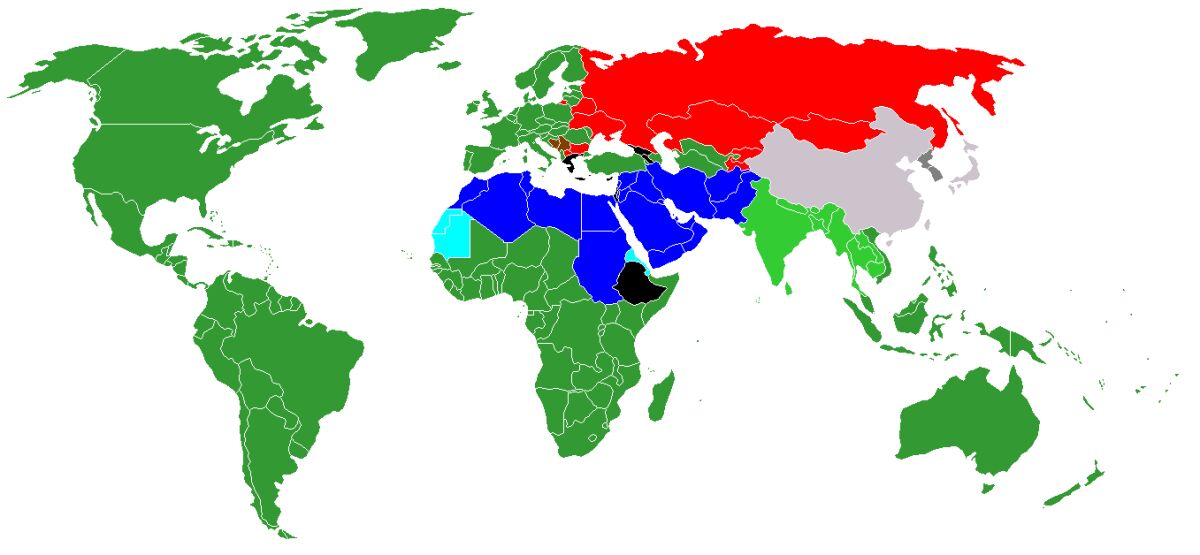
Our Israelite Alphabet
The question of who gave the alphabet specifically to the Greeks—and therefore to us—is still open to debate (as is even the Israelite nature of the Phoenicians themselves). But as we have examined, there is a solid weight of evidence pointing to an early Israelite transmission of the Hebrew alphabet—in spite of traditional labels as “Phoenician” and “proto-Canaanite.” (And when those titles are impossible—as for the Ethiopian and Arabian Peninsula—then “proto-Siniatic.”)
But at its core, the question about the transmission of the alphabet to Greece (and thus to us) is really a side story. Because evidence points to the Israelites as being responsible for the very creation of the proto-Siniatic alphabet that fathered them all.
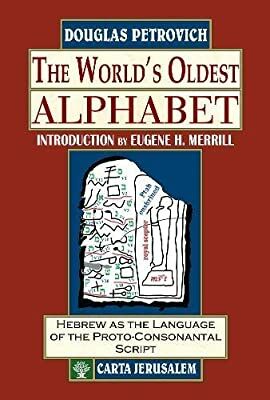
As mentioned in the first part of this article series, the proto-Siniatic alphabet was discovered among a slave Semitic community working in Egyptian mines. This enslavement matches with the period of the biblical slavery of the Israelites in Egypt. Further, this script was discovered in an area of the Sinai matching a key part of the biblical Exodus story. Debate rages as to the translation of this script—Prof. Douglas Petrovich identifies a number of biblical settings and personalities, including Asenath, Ahisamach and even Moses. (Read more about all of this here.)
Are the Phoenicians known for their enslavement in Egypt, before migrating northward into the Levant? Are the “proto-Canaanites” remembered continually for their suffering in Egyptian labor camps? Perhaps the “proto-Sinaites,” before the flourishing of their language in the Levant? Of course not. It is the Hebrews. The weight of evidence must be followed—and the weight of evidence points to a Hebrew alphabet.
And why was their new alphabet such a hit—why did it spread further into nearly every country on Earth today? Why does nearly every country, excepting a handful of Asian nations, use this alphabet system as a basis for their various languages—from English to Russian to Swahili?
Simplicity.
The ancient alphabet of the Hebrews was revolutionary for its simplicity. One simple sound for one simple symbol—and only 22 of them. In an ancient world of complex hieroglyphs and syllabaries, with hundreds of different symbols to learn (and which only a dedicated scribal few could read), “proto-Siniatic” really was the working man’s language—a literal “language of the slaves” that anyone could readily become educated in and use. (So it probably is no wonder, then, that experts recently discovered literacy to be widespread among the ancient Israelites.)
It’s another story for another day, but what was the language spelled out by this radical new alphabet? A Semitic language. And where does the earliest Semitic language trace? The Akkadian-Babylonian empire, of southeastern Mesopotamia. And what was one of the primary cities of this empire? Ur. You can theorize for yourself how the Semitic language migrated west to the land of Canaan.
All in all, perhaps it is no wonder that a God with a love of “simplicity”—as the Bible often describes—used this alphabet to preserve His Holy Scriptures. Thus, maybe the question “Is Solomon to thank for our English alphabet?” is the wrong one.
Thank God for our alphabet.
